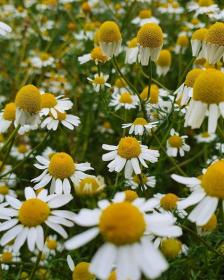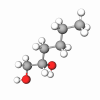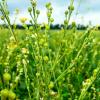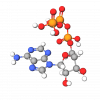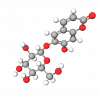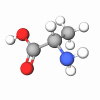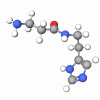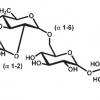Chamomile (Chamomilla Recutita or Matricaria Recutita) tea has been a popular remedy throughout the ages. It is legendary in literature, popular nursery rhymes, and fairy tales.
The tea Peter Rabbit's mother used to soothe his aching head is still a classic remedy for calming nerves and relieving indigestion. Herbalists Dioscorides and Pliny recommended baths or poultices of chamomile to relieve headaches and disorders of the kidneys, bladder, and liver.
Chamomile has been used in flavoring liqueurs, perfumes, shampoos, special tobacco, and hair rinses to add "sunlight" to hair and accentuate natural blond highlights. In ancient Arabia, it was used in bath products as a calming agent and was massaged into the body to reduce rheumatic pain.
Chamomilla Recutita Extract is a light to medium amber liquid with a characteristic odor. It is used in hair care products to add sheen and highlights or combined with neutral henna to add golden highlights to dark hair.Thanks to its soothing qualities, Chamomilla Recutita Extract is helpful in skin care creams, moisturizers, lotions, and bath products.
Chemical Constituents of Chamomilla Recutita Extract
Sesquiterpenes
Major components of the authentic essential oil are (-)-α-bisabolol, the bisabolol oxides, and matricine. During steam distillation of the chamomile flowers, the colorless matricine is decomposed by saponification, dehydroxylation, and decarboxylation into the deep blue-colored chamazulene.
Thus, steam-distilled chamomile oils with a high concentration of chamazulene are deep blue. In contrast, such oils with a minor concentration of chamazulene are blue-green or yellow-green colored. The coloring of chamomile oil indicates the "quality" of the essential oil. This refers to steam-distilled oils.
In the case of the CO2-extracted oils, there is no decomposition of the matricine. The essential oil contains up to 45% trans-β-farnesene. Minor sesquiterpenes in the essential oil are the guaianolide chamaviolin, the spathulenol, α-cubebene, α-muurolene and calamene. The allergenic sesquiterpene lactone anthecotulid is no component of Chamomilla recutita but of Anthemis cotula .
Polyines
Gently prepared chamomile oils contain cis-trans isomers of en-in-dicycloether, also called spiroether. The ratio of cis and trans isomers in genuine chamomile oil is about 2:1. During steam distillation the isomerization of the cis-spiroether into the trans- form occurs. Technically obtained chamomile oil contains only traces of these sensitive components.Coumarins
Chamomile flowers contain less than 0,06% of the coumarins herniarin (7-methoxy- umbelliferone) and umbelliferone.
Flavonoids
Chamomile flavonoids are also essential components with approved pharmaceutical efficacy. The drug contains up to 0,5% apigenin-7 glycoside. Gently dried chamomile flowers contain only traces of free apigenin. Enzymatic hydrolysis leads to free apigenin, luteolin, quercetin, and other methoxylated aglycones. Other constituents are amino acids, anthemic acid, choline, polysaccharides, tannin, and triterpene hydrocarbons (i.e., triacontane).
